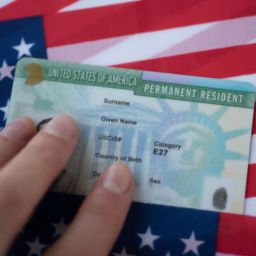
Navigating the complexities of international tax law can be challenging, especially for taxpayers who wish to leverage tax treaties between the United States and other countries to minimize their tax liabilities. Form 8833 is a critical tool in this process.
The IRS requires taxpayers who want to take a treaty position on their tax returns to submit Form 8833. Technically referred to as a Treaty-Based Return Position Disclosure Under Section 6114 or 7701(b). Given the complexities of international tax law and the varying interpretations of treaties between countries, Form 8833 provides a standardized method for taxpayers to disclose their treaty positions to the IRS.
How to File IRS Form 8833
When filing a tax return and taking a treaty position, the taxpayer must attach Form 8833 to their return and summarize their treaty position. This requirement ensures transparency and compliance with IRS regulations.
Key Sections of IRS Form 8833
Section 6114 mandates that any taxpayer taking a position that a U.S. treaty overrules or modifies a U.S. tax law must disclose this on their tax return or on an attached statement. The Secretary of the Treasury may waive this requirement in certain cases where it would not impede tax assessment and collection.
Section 301.7701(b)(7) warns that dual-resident taxpayers who claim benefits under a tax treaty by electing to be treated as residents of a foreign country may be deemed to have expatriated under section 877A, which has significant tax implications.
Instructions for Form 8833
According to the IRS instructions for Form 8833, taxpayers must use the form to disclose treaty-based return positions as required by section 6114 and related regulations. A separate form is required annually for each treaty-based position taken. Taxpayers must attach Form 8833 to their tax return, such as Form 1040NR, Form 1040NR-EZ, or Form 1120-F. If no tax return is otherwise required, the form must be filed at the appropriate IRS Service Center.
Common Examples of Form 8833 Tax Treaty Positions
- Dual-Resident Taxpayer: An individual considered a resident of both the United States and another country under each country’s tax laws can use Form 8833 to claim treaty benefits as a resident of the foreign country. The form must be filed with a timely tax return to avoid unintended tax consequences.
- Expatriation and Dual-Resident Trap: Claiming residence in another country to reduce U.S. tax liability requires careful planning to avoid being deemed to have expatriated, which can trigger significant tax obligations under section 877A.
- Effectively Connected Income and Permanent Establishments: Taxpayers may use a treaty to modify the taxation of income connected with a U.S. trade or business that is not attributable to a permanent establishment in the U.S.
- Disposition of U.S. Real Property: Treaties can sometimes reduce or modify the taxation of gains or losses from the sale of U.S. real property interests.
Considerations Before Taking a Form 8833 Tax Treaty Position
Taking a tax treaty position using Form 8833 is a serious decision. It may put the taxpayer at odds with IRS interpretations and precedents, potentially leading to audits, underreporting penalties, tax liabilities, and interest. In cases involving unreported assets, offshore penalties and deeper IRS scrutiny can result.
Conclusion
Form 8833 is an indispensable tool for taxpayers who wish to take advantage of the benefits provided by international tax treaties. By ensuring compliance with IRS regulations, clarifying taxpayer positions, avoiding double taxation, and managing the risks associated with dual residency and expatriation, this form plays a vital role in effective tax planning. Given the complexities involved, consulting with an experienced tax professional is essential to navigate the requirements of Form 8833 and optimize your tax position.
To learn more about this topic, we invite you to schedule a 15-minute free call with us here.








